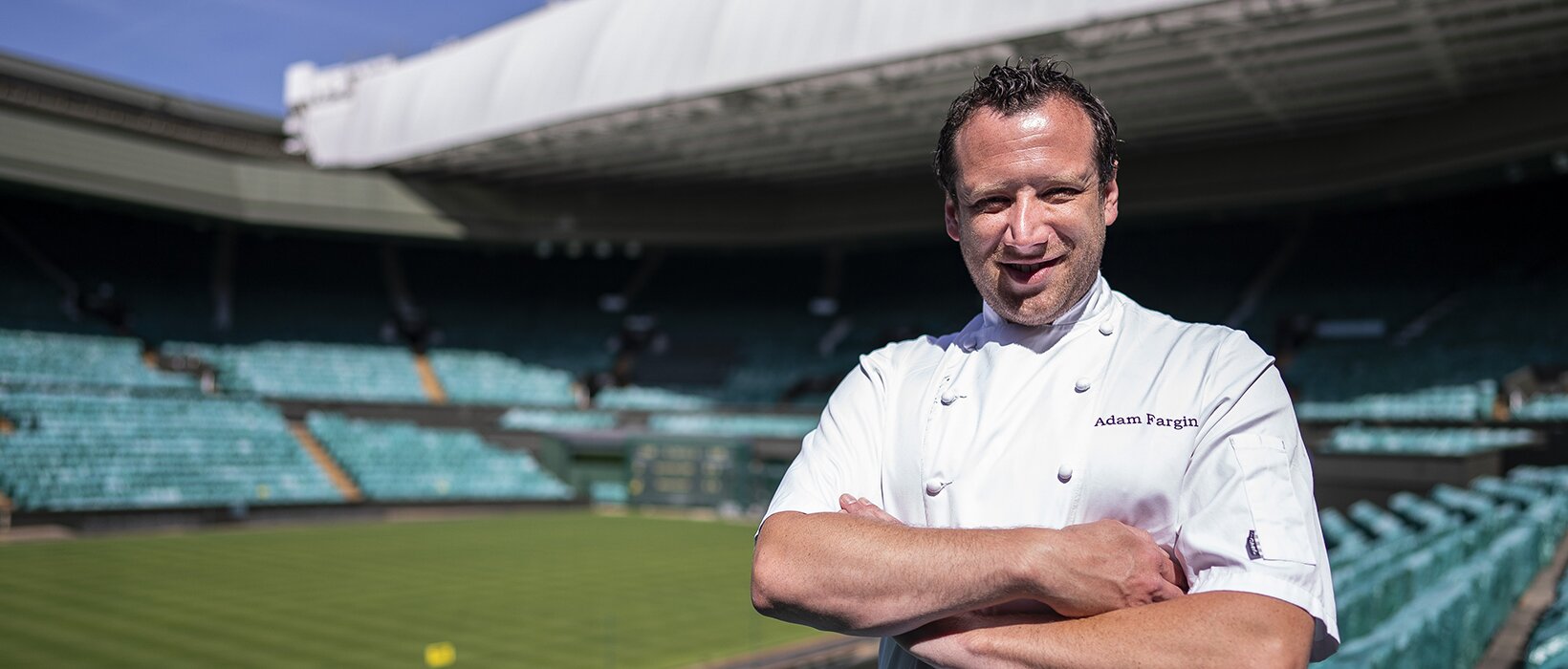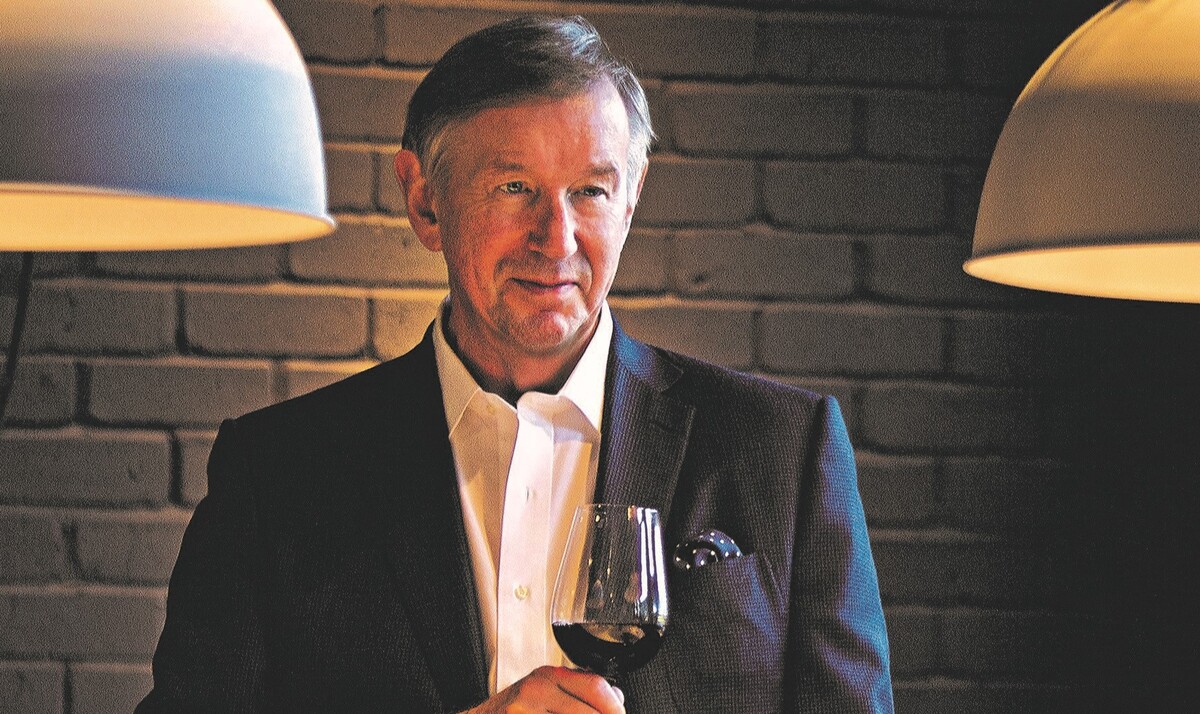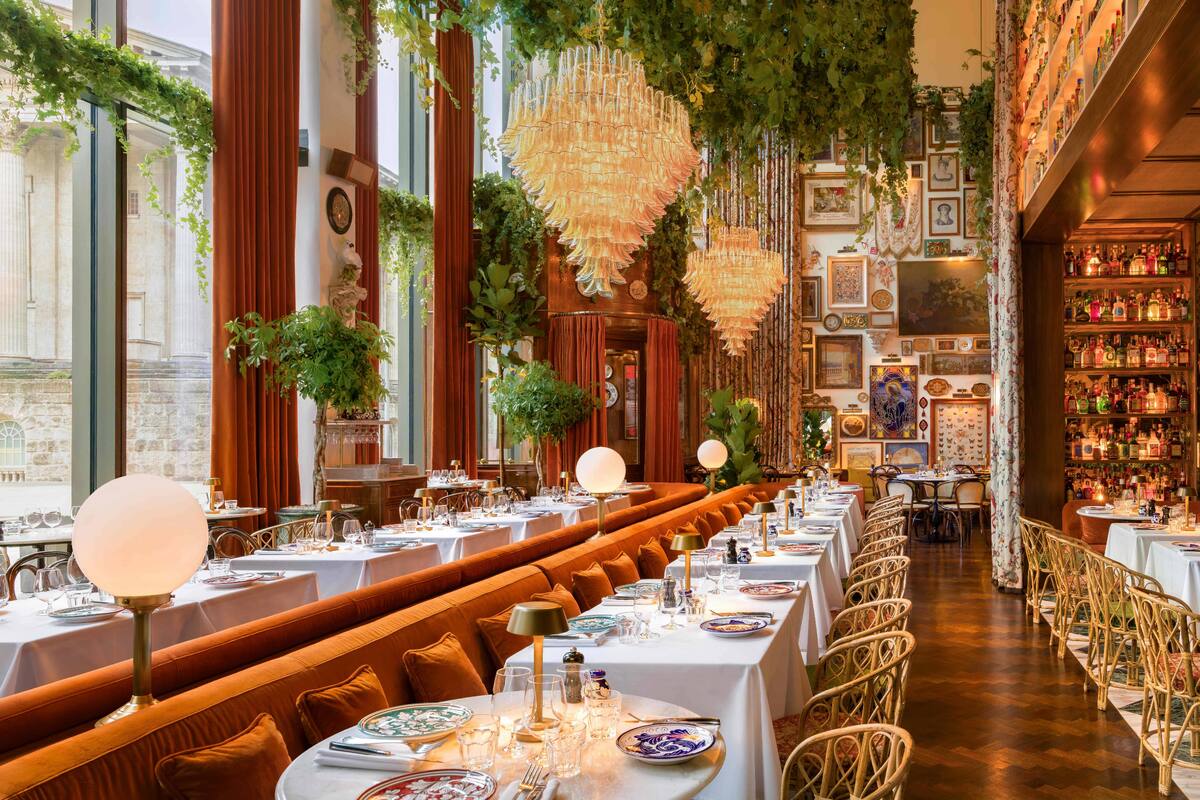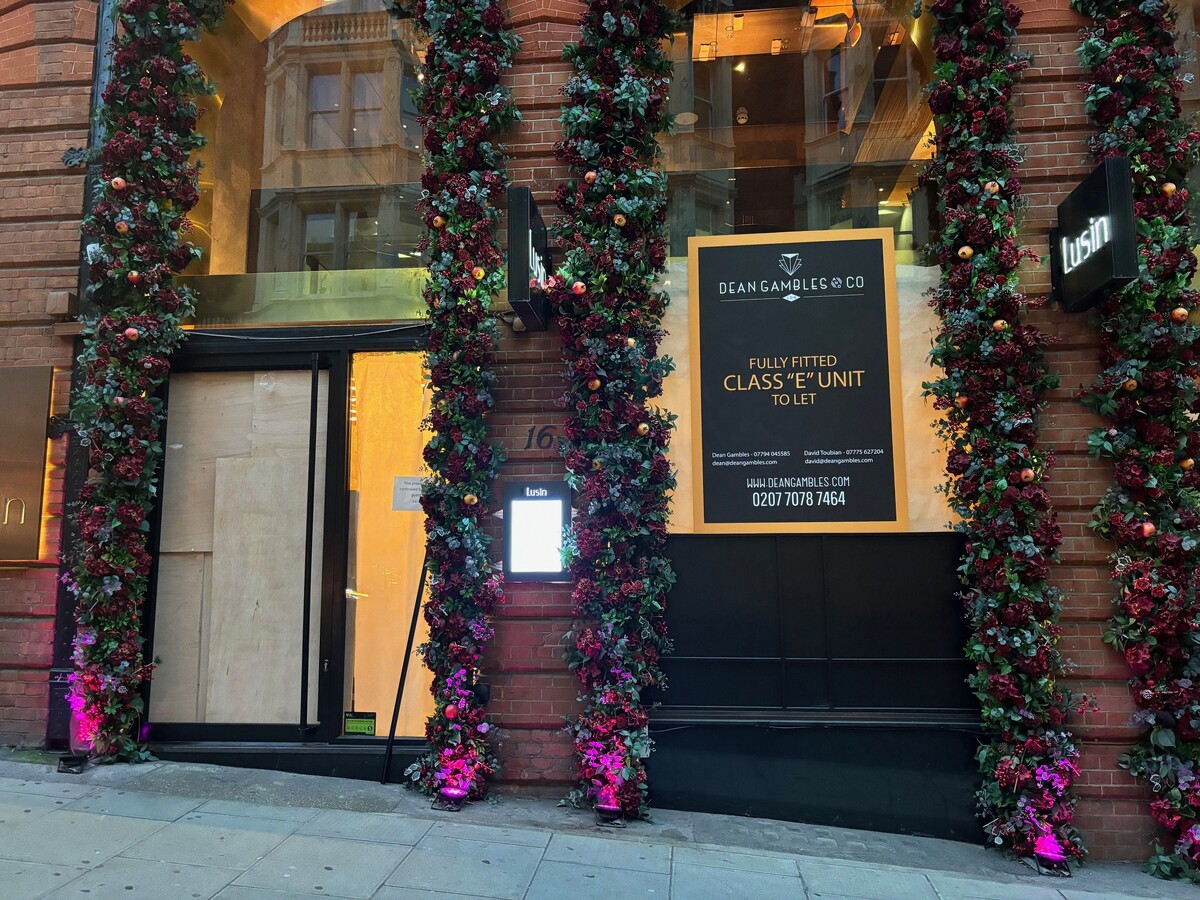The Caterer interview: Adam Fargin, executive chef of the All England Lawn Tennis Club
The executive chef of the All England Lawn Tennis Club is in charge of catering for elite athletes and the strawberry-loving public at Wimbledon
How long have you been looking after food and beverage at Wimbledon?
It’s my fourth championships, but my fifth year because of Covid. I joined Levy UK + Ireland in 2018 (part of Compass Group which oversees all the catering at Wimbledon) but before that I was in restaurants and hotels. I fancied a change and when Wimbledon came knocking, it’s one of those places you can’t really turn down. I had a year to grow into the role and then took over as the executive chef in 2020.
What is the biggest difference when entering the world of Wimbledon?
It’s the scale and size of what we do here. But I had some good advice – just break it down into really small chunks and tackle one bit at a time. I’m pretty chilled out, so nothing really fazes me, which I think probably helps. But I think all skills are transferable. It's just how you transfer them.
How many guests do you cater to across the fortnight?
Up to 50,000. We’ve got membership, hospitality and then general admission – people who come through the gates with tickets who can eat at the restaurants or one of our concessions. We also feed the staff and players and there’s also the Royal Box – so we’re catering for everything from sandwiches to the Royal Box.
What makes Wimbledon different from other events is that you can still bring a packed lunch, which is really rare. But most people are coming for the experience, so they’ll probably purchase something from us, which is why we put as much time and effort into a sandwich range as a fine dining restaurant.
What are you working on for the 50 weeks of the year when the world’s gaze isn’t on south-west London?
After the Championships, it’s about reviewing what’s happened. We spend quite a lot of time debriefing and then it goes straight into the planning phase – coming up with menus, new ideas, new concepts – and then we go into the tasting phase. We have a members’ restaurant that is open for dinner Monday to Friday and for lunch seven days a week, serving 40 covers a day, and we also have an events business and staff dining every day as well, so it’s not like it completely stops.
What time of year does it start to get exciting?
For me, it’s after Easter, because a lot of the tastings have been done, the menus have been signed off and we start doing pre-production, which is where I’ll bring a team in and we cook sauces, stocks and purées for seven or eight weeks. We make things like the glaze for the teriyaki chicken or fish cakes and freeze what we can. I like to prepare as much as I possibly can – I don’t want to buy everything, I want it to be different and unique to us.
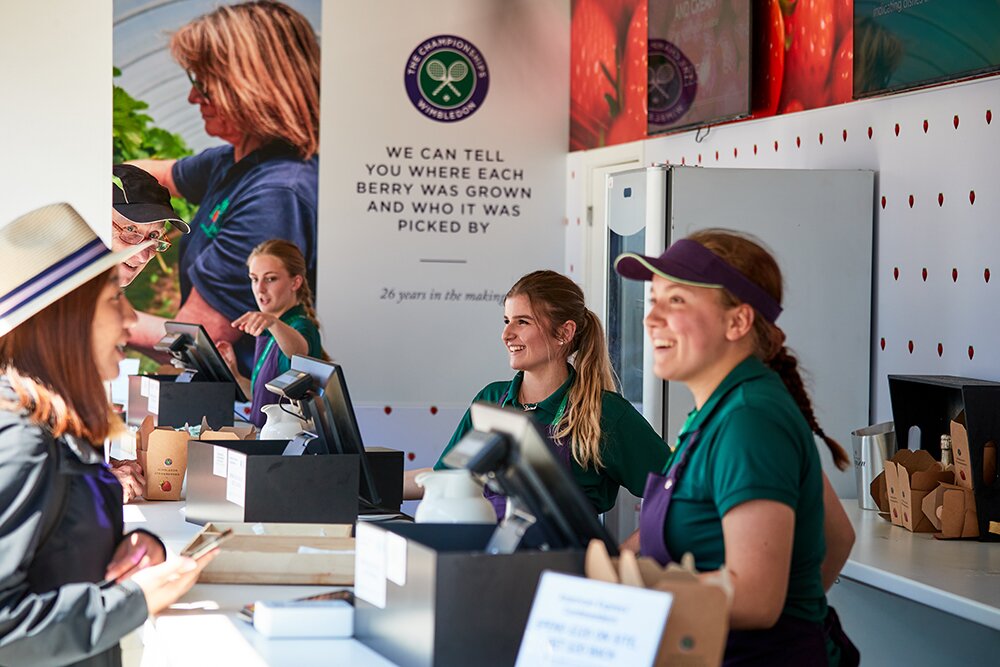
What are you most excited for food-wise this year?
I'm most excited about Marcus Wareing’s offer in the 400-cover Rosewater Pavilion restaurant. Some of those dishes are taken straight out his restaurant at the Berkeley so it’s really a representation of him and we’ve really tried to get them as close as we possibly can. I think his crab starter will be the biggest hit. It’s a beautiful set bisque and it’s really fresh and exactly how he serves it in the restaurant. His custard tart is another example of something that’s basically been picked up from the Berkeley and dropped here, but of course, we have to scale up the recipe. I was on the Forward with Marcus Wareing apprenticeship programme, so we’ve got a good relationship and it was so worthwhile doing the programme to work with someone who’s as forward-thinking as him and it’s given me so many opportunities.
How about on the more casual offering?
This year we’re enhancing our pizza operation. So many places use a pre-made sauce base, which is fine, but we’ve taken it to another level and we’re hand-stretching all the pizza bases using a dough that’s specifically been made for us. We will cook them in two wood-fired pizza ovens that can each cook 36 pizzas at a time. It’s the sort of pizza you get in a high-street restaurant – not what you would see at sporting venues.
What has changed the most about the food offering at Wimbledon over the years?
It’s probably the eating habits of our guests. The length of time that tennis is being played is now longer, so there are a few late nights and we try to reflect that in the food offering, through things like cheese and charcuterie, or cake and afternoon tea to allow that to flow through into the night. The other big change is that guests want healthier food, so we’re doing some healthy, yet recognisable dishes, like chicken and chips, but done in a nice way.
How do you and the team manage these later hours?
We plan for the worst. The first days are always really hard anyway and if we’re finishing at 11pm, it does make the days extremely long. So we’re planning for it this year and having some people come in to do a late shift to make sure that people aren’t working silly hours.
For most of the year we have 15 chefs in the kitchen, and then we have to scale it up to around 320 for those two weeks – some of them are contracted in just for Wimbledon and others are bought in from other parts of the business. We are lucky enough to be able to utilise chefs from across the Levy business. I’ve got 50 weeks to make sure that when they come in they succeed – I can’t do everything, so I have to have an element of trust there. I really have to go down to a fine level of detail and instruct them exactly how to do the recipe, giving them the specs, the pictures and step-by-step guides. It’s not fair for me to ask them to come in and just expect to know what they’re doing.
Tell us a little about what the players eat?
There’s a walk-in restaurant for players so they can just help themselves to what they need, which is fuel – it’s protein, rice, chicken, salad and vegetables. It’s not fancy cooking, but good homemade food made from fresh ingredients. The biggest seller is actually the tomato pasta.
The players have always eaten a lot of sushi, so we’ve just hired a new full-time sushi chef with an enhanced offer this year and so that’s being made in-house every day.
How have the issues around food inflation hit your menu development this year?
Everyone knows there is a problem with inflation, but there are other ways to tackle it, such as reducing food waste, which ties into the wider Levy strategy to get to net zero by 2027. But if you’re reducing food waste, you’re reducing your spending.
It must be hard to plan in regards to food waste when a match could run over by hours.
You need to hold your nerve sometimes, because it’s easy to panic and pull together 100 burgers, but that’s not the answer. We should be looking at data and the start and finish times and think there’s enough experience around the table to know if we’ll still be busy at 10pm. We just need to keep an open dialogue throughout the day.
Wimbledon in numbers
- 234,416 meals served throughout the Championships
- 2,820 employees needed to run the food and drink operation
- 326 chefs
- 191,930 portions of strawberries
- 276,291 glasses of Pimm’s
- 18,061 portions of fish and chips
- 64,703 portions of ice-cream
- 6,147 portions of pasta for competitors
- 4,242 portions of sushi for competitors
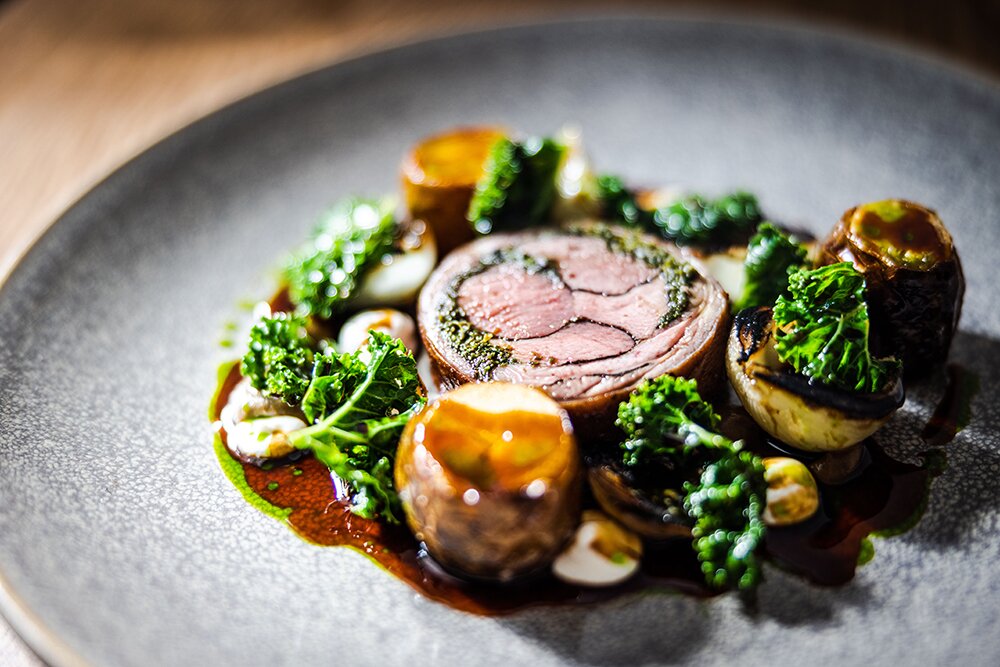
A taste of Wimbledon
Wimbledon has a plethora of F&B options for tennis fans, here are just a few:
The Skyview Suites offers the most luxurious, official hospitality experience at the Championships, allowing entertainment of guests in a private setting, within Centre Court.
- Dish Island Foods saddle of lamb, smoked aubergine purée, rainbow kale, chard onion, yoghurt, lamb jus
The Lawn is a spacious facility offering award-winning official hospitality at the Championships, Wimbledon with an à la carte menu designed and prepared by renowned chefs Michel Roux Jr. and daughter Emily Roux.
- Dish Pea and mint, pea mousse, goat’s curd, mint oil, pickled radishes, fresh peas
The Wingfield is a restaurant offering a dining experience for ticket holders which champions seasonal British produce with views across the Tea Lawn.
- Dish Isle of Wight tomatoes VE, low CO2e roasted garlic aioli, Nocellara olives, black olive crumb, lovage pesto and basil
Parkside Kitchen is a relaxed sit-down restaurant, serving hot and cold dishes.
- Dish Wimbledon coronation chicken with roasted cauliflower, couscous, broccoli stalks and spiced savoury granola
Levy's Wimbledon suppliers
Heritage tomatoes, Arreton Valley, Isle of Wight
Tomatoes have been growing in the Arreton Valley for over 30 years. The geographical position of the Isle of Wight allows the plants to benefit from the extra early season warmth, providing the perfect conditions to organically grow the heirloom heritage variety.
Free-range chicken, Sutton Hoo, Suffolk
Reared in the heart of the Suffolk countryside on 40 acres of pasture overlooking the River Deben, Sutton Hoo chicken is the product of a small chicken farming family who grow poultry slowly and in a traditional way. The chickens take three months from egg fertilisation to full size, which allows more time for flavour to develop. The birds live in small groups and shelter from the elements in mobile houses that have no artificial lighting and are naturally ventilated.
Strawberries, Hugh Lowe Farm, Kent
The 500-hectare Hugh Lowe Farms has been supplying strawberries to Wimbledon for over 25 years. The world-famous fruit is hand-picked and delivered each morning of the Championships, with the ripening of the berries timed to perfection for the two-week tournament.
Cristina Martinez Gonzalez, head pastry chef, Wimbledon
Talk to me about pâtisserie at Wimbledon.
We have elevated the menu to feature a diverse range of exquisite desserts, from delicate pastries and elegant cakes to indulgent tarts and artisanal chocolates. I believe in incorporating both British and international influences to create a truly memorable and unique pastry experience at Wimbledon.
What particular challenges do you face as the head pastry chef?
Temperature control, especially on hot days. The heat and humidity can impact the consistency and stability of pastry dough and fillings, affecting the overall quality of our creations. To address this, we have implemented stringent temperature control measures in our pastry department. We use cooling systems, closely monitor working conditions, and adapt techniques and timings accordingly.
This ensures our pastries maintain their desired texture, appearance and taste, even in these challenging environmental conditions.
Another significant challenge is managing high-volume production while maintaining consistent quality. I address this by implementing meticulous planning, streamlined workflows and effective communication within the pastry team.
We also need to strike a balance between creativity and tradition. I strive to incorporate innovative elements into our desserts while respecting the timeless classics that guests associate with Wimbledon.
How many desserts are sold across the fortnight?
We serve tens of thousands of individual dessert portions but the most popular is the classic Wimbledon strawberries and Chantilly cream – and of course there is a plant-based option.
Do you incorporate strawberries elsewhere?
One of my favourite strawberry desserts is our Wimbledon trifle – a thin layer of sponge cake soaked in strawberry syrup and a fruit element, our strawberries and strawberry jelly, vanilla custard and whipped cream, layered in a glass dish. An important detail about this dessert is that it is plant-based. It is finished with a glossy strawberry glaze and garnished with fresh lime zest.


